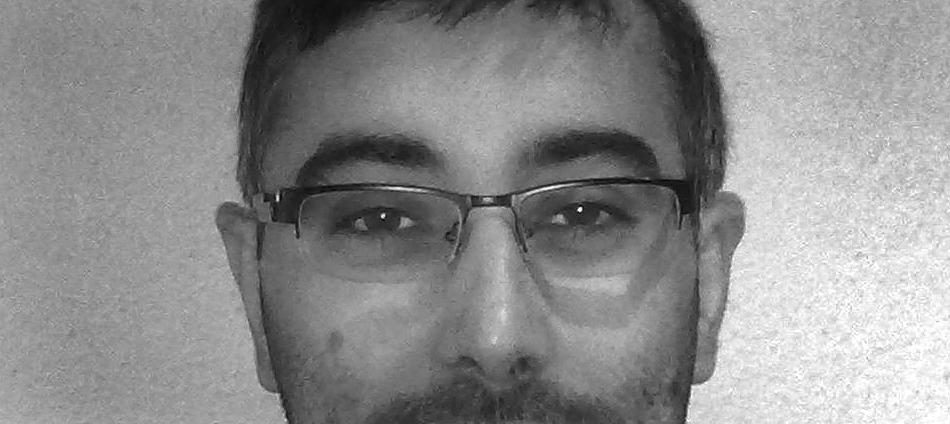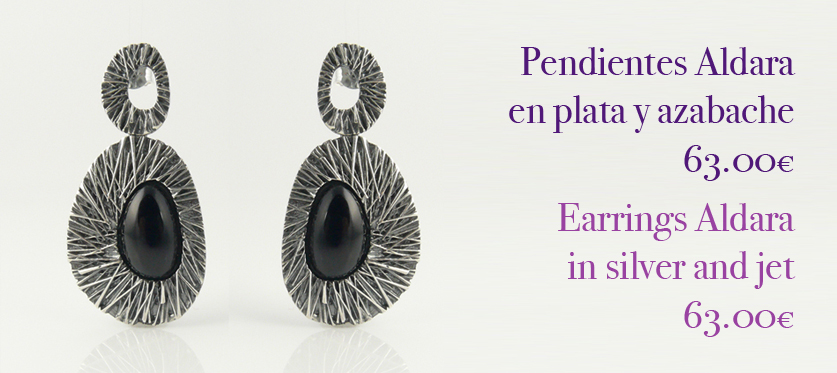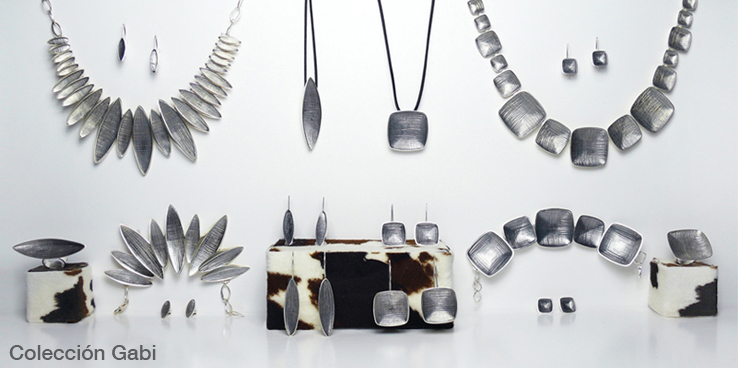¿Cómo empezaste en el mundo del diseño de joyas?
En el año 1996 asistí por primera vez a la feria de joyería de Madrid. Fue ahí cuando empecé a adaptarme a las nuevas tendencias. Hasta entonces, había realizado sobre todo diseños muy clásicos, pero poco a poco el público exigía cambios en las joyas con azabache, que siempre fue una piedra destinada a diseños muy tradicionales. El mercado en Santiago de Compostela y el de Madrid son muy distintos, pero si quieres mantenerte arriba tienes que renovarte constantemente.
How did you started in the jewlery designing world?
In 1996 I went for the first time to the Madrid Jewelry Trade Fair. That’s when I started to adapt myself to the new trends. Until that time, I have done very classical designs, but little by little the public started to demand changes in the jewels made with jet, that had always been a stone destined to very traditional designs. The markets in Santiago de Compostela and Madrid are very different, but if you want to keep up, you must renew yourself constantly.
¿En qué te inspiras a la hora de diseñar?
Muchas de mis colecciones están inspiradas en elementos de la naturaleza. Por ejemplo, en la colección Aldara, quise hacer una textura parecida al entramado de la paja, una textura que le diera altura y volumen a las piezas. Pero lo cierto es que, una vez que empiezas a diseñar, nunca sabes cómo vas a terminar, nunca sabes a dónde te va a llevar ese proceso de creación. Cuando tienes todos los elementos encima de la mesa, ves que puedes encontrar caminos que antes no se te habían ocurrido. La colección Gabi estaba inspirada en un principio en los cantos rodados, piedras de río, pero al final derivó el algo completamente diferente, que resultó ser mejor que la idea inicial.
In what do you inspire yourself when you design?
Many of my collections are inspired in nature’s elements. For example, in Aldara Collection, I wanted to make a texture simalar to the straw’s framework, a texture that gives volume and height to the pieces. But the truth is that once you start designing, you never know how you are going to finish, you never know where that creative process is going to take you. When you have all the elements on the table, you realize that you can find paths that you haven’t imagined before. At the beggining, Gabi Collection was inspired in the pebbles, river stones, but at the end it arised into something completely different, that resulted better than the original idea.
¿Cómo crees que han influido las nuevas tecnologías en la creación de joyas?
Creo que han revolucionado este oficio por completo. Antes había piezas que resultaban muy complicadas de hacer a mano. Las nuevas tecnologías ayudan a crear joyas nuevas que antes eran impensables. Además, te facilitan el trabajo, es mucho más rápido y abaratan los costes. Es cierto que existe una parte del público que aprecia y sabe valorar las joyas hechas a mano, pero a la mayoría lo único que les importa es el resultado final, el impacto visual que esa determinada joya despierta en ellos.
How do you think new tecnologies have influenced in the creation of jewels?
I think it has revolutionized completely this trade. Before there were pieces that resulted very complicated to handcraft. New tecnologies help to create new jewels that where unthinkable years ago. Furthermore, they make work easier, is much rapid and they reduce costs. Is true that some people appreciate hand made jewels, but to the majority, the only thing that matters is the final result, the visual impact that a particular jewel arouse in them.
¿Qué consejo le darías a los jóvenes que quieren abrirse paso en esta disciplina?
Para un joven que quiera abrirse paso hoy en día en el mundo del diseño de joyas, son imprescindibles conocimientos de diseño por ordenador en 3D. Cada vez hay menos trabajo en la mesa y más delante de la pantalla del ordenador. El diseño en 3D es ya imprescindible para cualquier empresa de joyas que quiera competir en el mercado. Los acabados perfectos de las piezas o diseñar con pesos ligeros son cosas que antes podían llevarte días. Ahora, y cada vez más, hacen falta profesionales que dominen estas nuevas tecnologías. Para la gente joven que empieza es indudablemente más fácil que para los que ya llevamos unos años en el sector. Los jóvenes están ya acostumbrados a manejar ordenadores y tienen más capacidad que los artesanos que llevan años trabajando en esto. La clave está en diseñar piezas que consigan el equilibrio perfecto entre precio y diseño.
What advice would you give to young people that want to make their way in this discipline?
For young people that want to start nowadays in the world of jewelry design, are indispensable 3D computer design knowledge. Every day there is less work on the table and more in front of the computer’s screen. 3D design is essential for any jewel’s company that wants to compete in the market. Perfect-finished designs or designing with light weights, are things that could last days in the past. Now, more and more, profesionals that master new tecnologies are required. For young people that are starting, is undoubtedly easier that for people like me, that have been for many years in this sector. Young people are used to operate with computers and they have more capacity than silversmiths that have been working on this dicipline for years. The key is designing pieces that achieve the perfect balance between price and design.
¿Cuál es la tendencia en el diseño de joyas en los últimos años?
Como en la ropa, hay diseños de joyas que nunca pasan de moda, que son atemporales. Por ejemplo, los diseños de plata y azabache con filigrana. He diseñado joyas hace 10 años que hoy se siguen vendiendo igual que el primer día. Sin embargo, es cierto que las tendencias cambian continuamente. Mi tendencia es la que le mercado demanda, lo que veo cada día, en la calle. La moda, la ropa, los colores, los tejidos, marcan una tendencia que tienes que seguir inevitablemente.
What is the trend in jewlery design in the last years?
As in clothes, there are jewels designs that never go out of fashion, they are timeless. For example, the silver and jet designs with filigree. I have designed jewels 10 years ago that today are selled as well as the fisrt day. However, it’s true that trends change continuously. My trend is the one that the market demands, what I see every day, in the street. The fashion, the clothes, the colors, the fabrics, set a trend that you have to follow inevitably.




Ваша информация на тему – Entrevista a Elias Perez, disenador de joyas · Interview to Elias Perez, jewelry designer – Blog de Amboa – Maeloc вашего сайта http://www.amboamaeloc.com просто классная. Правда жаль что видео нет.